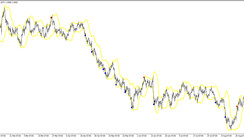Introduction to Swing Trading
Swing trading is a methodology that involves holding onto market positions for several days to weeks. The primary goal of a swing trader is to leverage short-term market trends. Typically, they harness the power of technical analysis to pinpoint trading possibilities.
Deciphering Swing Trading
Swing traders fundamentally rely on technical analysis to spot trends within the market. They search for consistency in price shifts, including indications of support and resistance, moving averages, and chart configurations. After pinpointing a trend, they focus on entry and exit points that accord with their risk acceptance and trading objectives.
Key Factors in Swing Trading
Swing trading entails several key elements, such as:
Risk Appetite: Swing trading requires traders to have a certain level of risk tolerance, given that their positions aren't maintained for an extended period.
Trading Objectives: Swing traders should establish clear trading targets like desired profit margins or acceptable loss levels.
Trading Style: Various swing trading styles exist, and traders ought to choose one that aligns with their personality and risk acceptance.
Trading Tools: Access to the right equipment is crucial for swing traders when it comes to spotting opportunities and managing risk. These tools could include technical analysis software, charting instruments, and trading platforms.
The Best Indicators for Swing Trading
Swing traders use numerous technical indicators. Some of the most widely embraced include:
Moving Averages: These are straightforward but potent methods of identifying market trends.
Support and Resistance Levels: These are price thresholds where the market is expected to either solidify or struggle.
Chart Patterns: These are price chart configurations that can presage possible trading opportunities.
Preferred Swing Trading Assets
Any liquid asset experiencing adequate volatility to engender short-term trajectories can be leveraged for swing trading. Nevertheless, some more popular assets include:
Stocks: These are favored by swing traders due to their liquidity and high volatility.
Forex: This asset too is a common pick for swing traders given that it's very liquid and highly volatile.
Cryptocurrencies: This newer asset classification has witnessed amplified popularity with swing traders.
Expert Insights into Swing Trading
Swing trading is a well-liked strategy among novices and seasoned traders alike. However, it's pivotal to remember that it does not preclude from risk. A disciplined approach and sound trading plan are essential for successful swing trading.





